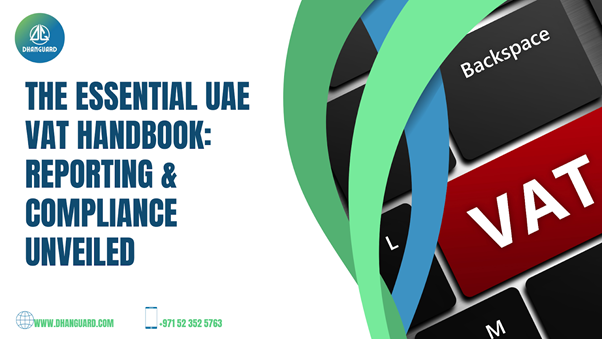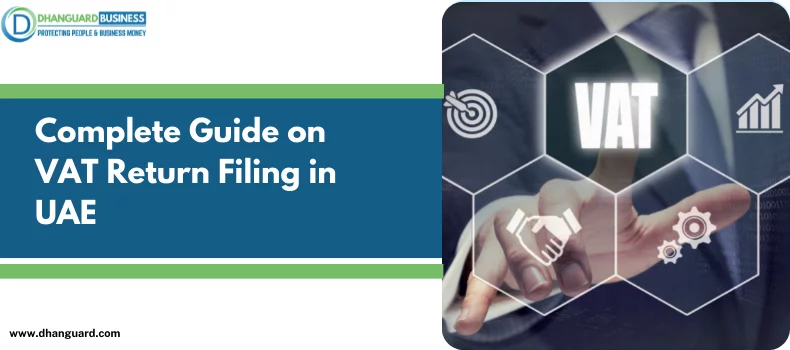The Value Added Tax (VAT) system has significantly impacted business operations in the UAE since its introduction. A tax haven for start-ups, medium-sized businesses, and multimillion-dollar enterprises is the United Arab Emirates (UAE). It's now one of the most sought-after locations for businesses to open. Starting a business in the United Arab Emirates offers several advantages: reduced import taxes, zero currency restrictions, a range of business licenses and activities allowed within the zone, and zero personal income tax. If you want to launch, grow, or relocate your company, the United Arab Emirates is a viable option because of its stable economy, welcoming environment for investors, and tax-free business environment. You must research or comprehend the operation of this nation's VAT system before selecting your choice. This comprehensive guide aims to illuminate the intricacies of UAE VAT, the registration process, filing returns, and the critical aspects of VAT reports. To learn more, continue reading below.
Understanding VAT in the UAE
VAT is a consumption tax imposed on the value added to goods and services at each stage of the supply chain. In the UAE, VAT was introduced on January 1, 2018, at a standard rate of 5%.
Who Should Register for VAT?
Businesses exceeding the mandatory registration threshold of AED 375,000 in annual turnover are required to register for VAT. Additionally, voluntary registration is possible for businesses below this threshold.
Which products are rated zero?
Only some goods or services are liable to the 5% VAT rate. VAT is 0% in some economic operations that provide zero-rated goods and services.
Among the zero-rated components are:
-
Goods and services exported outside of the Gulf Cooperation Council (GCC)
-
Any supply of land, sea, or air for transportation purposes, including international transportation
-
Availability of precious metals with high investment value, such as platinum, gold, and silver
-
New estate for residential use
-
Provision of healthcare and education services
When creating an invoice for zero-rated supplies, remember that the tax column must be displayed even when empty.
Registering for VAT in the UAE
Following are the steps to Register for VAT in the UAE:
Assess Eligibility
Determine if your business meets the mandatory or voluntary registration criteria.
Gather Documentation
Prepare necessary documents like trade licenses, financial records, and identification proofs. Dhanguard will help you gather all the required documents, making the process easy.
Online Registration
Use the Federal Tax Authority's (FTA) online portal to complete registration. Follow the steps to register online.
-
Create and activate an EmaraTax account via the FTA website.
-
Open the account dashboard for EmaraTax.
-
Make a New Profile for Taxable Persons
-
To view the Taxable Person Account, click "View."
-
Select "Register" from the "Value Added Tax" menu.
-
Finish the registration procedure.
Which goods are exempt from taxes?
VAT-free supplies are known as tax-exempt supplies. Thus, make sure to consider this for zero-rated supplies. While tax-exempt supplies are free of VAT, zero-rated supplies are subject to 0% VAT.
The categories of supplies that are exempt from VAT are as follows:
-
Specific financial services, including life insurance, are made clear by VAT legislation.
-
Household assets
-
Bare territory
-
Local conveyance of passengers
Filing VAT Returns
VAT-registered businesses must file regular VAT returns, typically every quarter. A VAT return summarizes the VAT liability or refundable VAT for a specific period. Filing VAT returns in the UAE involves several steps. Here's a general guide:
Preparing for VAT Filing:
-
Accounting Records: Ensure all your financial records, invoices, receipts, and relevant documents are organized and up to date.
-
VAT-Registered: Make sure your business is registered for VAT with the Federal Tax Authority (FTA) in the UAE.
Steps for Filing VAT Return:
-
Login to the FTA Portal: Access the Federal Tax Authority's e-Services portal using your registered credentials.
-
Select VAT Return: Locate the section for VAT returns and select the appropriate form (usually VAT 201 for regular taxpayers).
-
Input Details: Enter the required information accurately. This includes sales, purchases, expenses, and other relevant data for the tax period.
-
Review and Validate: Double-check all entered information for accuracy and completeness before submission.
-
Submit Return: Once reviewed and verified, submit the VAT return online.
-
Payment: Pay any VAT liability owed based on the return within the specified deadline.
-
Retain Records: Keep a record of the filed returns and associated documents for the required period as per UAE regulations.
Important Points:
-
Filing Deadlines: VAT returns are typically filed every quarter in the UAE. Ensure you know the due dates for filing and payment.
-
Penalties: Late filing or non-compliance with VAT regulations may attract penalties and fines.
-
Use of Approved Software: Consider using approved accounting or VAT software that complies with FTA regulations to ease the process.
-
Seek Professional Advice: Consider consulting a tax professional or accountant for complex cases or need clarification on any aspect of VAT filing.
VAT Reports in the UAE
In the United Arab Emirates (UAE), reporting value-added tax (VAT) is crucial to complying with tax regulations. VAT was introduced in the UAE on January 1, 2018, and businesses must submit regular VAT returns to the Federal Tax Authority (FTA).
Here are some critical points about VAT reporting in the UAE:
VAT Return Filing Frequency
-
Businesses are typically required to file VAT returns every quarter. However, there are specific cases where more frequent filing might be necessary.
-
The filing deadlines are generally within one month and 28 days from the end of the tax period.
VAT Return Content
-
VAT returns in the UAE typically include details of sales, purchases, output VAT (collected from customers), input VAT (paid on purchases), and the resulting VAT liability or refund.
-
Businesses need to accurately report their taxable supplies, zero-rated supplies, exempt supplies, and any adjustments that might apply.
Mandatory Documentation
- Maintaining proper records and documents is crucial for VAT compliance. This includes invoices, accounting records, and other relevant documents for at least five years.
Filing Process
-
VAT returns in the UAE are filed electronically through the FTA's online portal.
-
Businesses must register with the FTA for VAT and obtain a Tax Registration Number (TRN) before submitting their VAT returns.
Penalties for Non-Compliance
- Failure to file VAT returns or submitting incorrect information can result in penalties and fines imposed by the FTA.
VAT Audit
- The FTA may conduct VAT audits to ensure businesses comply with VAT regulations. They review a company's financial records and VAT returns during an audit to verify accuracy and compliance.
It's essential for businesses operating in the UAE to stay updated with any changes in VAT regulations and ensure compliance with the reporting requirements to avoid penalties. Connect with Dhanguard to help manage and accurately file your VAT returns.
VAT Filing Important dates in the UAE
The 28th day of the month following the conclusion of the VAT return period is the deadline for filing any VAT return, whether quarterly or monthly. The deadline for completing a quarterly VAT return, for example, is May 28 for the quarter spanning from February to April.
For example, suppose your first tax period falls between January 1, 2024, and January 31, 2024. In that case, you must file your VAT return by February 28, 2024, at the latest (or the following working day if February 28 falls on a public holiday or weekend).
Conclusion
Navigating the intricacies of VAT in the UAE, including registration, VAT return filing, and generating comprehensive VAT reports, demands attention to detail and adherence to regulatory guidelines. By mastering these processes, businesses can enhance their financial management and ensure compliance with UAE tax laws. To file VAT in the United Arab Emirates, one must pay close attention to detail and follow all rules. To ensure seamless operations within the legal framework and to understand the complexity of VAT compliance and filing, businesses are recommended to seek the assistance from Dhanguard. In conclusion, even though VAT filing can be complicated, working with experienced specialists like Dhanguard can significantly lessen the load, allowing companies to concentrate on their core business while still adhering to UAE tax regulations. For professional VAT filing services that will guarantee your company's compliance and seamless operations in the UAE, get in touch with Dhanguard.
DhanGuard: All-in-One Solution for Business Setup in Dubai, UAE
DhanGuard is your ultimate one-stop solution for all your business needs. Whether you’re planning to set up a new company or expand your existing business in the UAE, we’ve got you covered with our comprehensive range of services. From Business Setup in UAE and Company Formation in Dubai to managing your financial and legal compliance, we provide everything you need under one roof.
Our services include:
- Company Formation in UAE and Dubai
- Opening a Business Bank Account in UAE and Dubai with a 99% success rate
- VAT & Corporate Tax Compliance
- Accounting, Bookkeeping, and Auditing Services
- Trade License Renewal
- Golden Visa Assistance
Let DhanGuard make your journey of Business Setup in Dubai seamless and hassle-free!




